Events and crossovers are a longstanding tradition in the world of comics. They provide a means of telling a larger story than can normally be told, and they give a reason for characters who normally don’t interact a chance to do just that. They’ve been around since the very beginning of comics, and they’re not going anywhere at this point.
Given the prevalence of events and crossovers, it stands to reason that some of them are more well-planned and better received than others. DC’s 2005-2006 Infinite Crisis event impacted the entire DC universe, with tie-ins to every major title published at the time. Love it or hate it, Infinite Crisis was an important crossover, with effects that resonated until the reboot in 2011.
Marvel’s recent Age of Ultron event, on the other hand, is one that doesn’t seem like a successful event at this point. Granted, the event just ended and we have yet to see all of the repercussions that Marvel promises are forthcoming, but several things that happened within the event itself have already put this one in the “not a success” pile for me.
(A warning: this article will have serious spoilers for the recently completed Age of Ultron event. If you don’t want to hear about important plot details, save the article until after you’ve finished the event.)
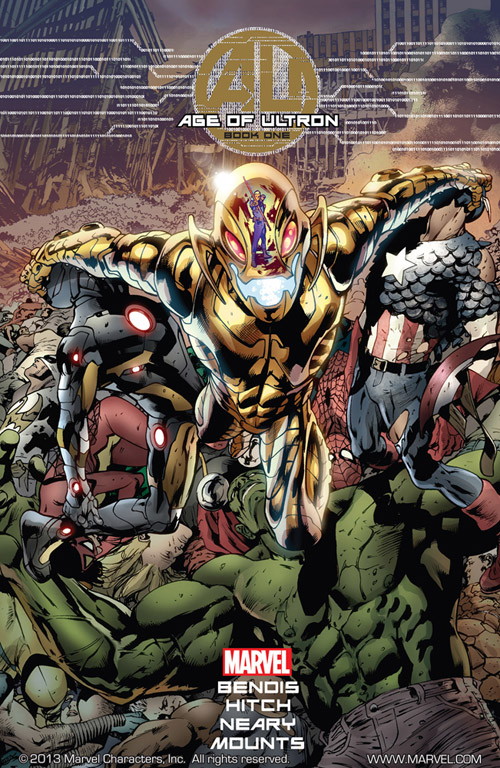
One of the major problems that I had with the event was the lack of focus that it had. In the first issue, it seemed like Clint Barton was going to be a main character; we see Hawkeye rescuing Spider-Man from the clutches of a gang waiting to sell him to Ultron. In the next issue, the focus is split between Peter Parker telling his story to Clint and a scene with Moon Knight and Black Widow searching for information.
In issue three, half the story is about Black Panther, Taskmaster, and Red Hulk, while the other half focuses on She-Hulk and Luke Cage. The split focus continues until the end of issue six, when some of the heroes go into the future to try to stop Ultron while Wolverine and Sue Storm head into the past to kill Hank Pym, thereby preventing Ultron from being created in the first place. The story does a decent job of sticking with Sue and Logan once they travel into the past, but it takes so long to get to their point of view that by the time we see it, it’s difficult to make a connection to what’s going on with them.

The cast of Age of Ultron is so vast that it’s understandable that the point of view switches around so often, but it makes it hard to care about what’s going on with the characters. Yes, the story is about the survivors of Ultron’s takeover, and I’m not saying that I wish more of the population of the Marvel universe had been killed off before the series began, but by spreading the storytelling duties around so much and then settling on one particular storyline and expecting us to connect to that, Age of Ultron missed its mark. I was set and ready to ride along with Clint or Peter as they worked their way through the post-apocalyptic world, but as more and more time went on and we saw more and more different viewpoints, it became hard to connect to anyone on any level.
Another major issue is all of the dropped plotlines in the story. It’s hard to juggle everything going on in an event of this magnitude, but most of the time, any loose ends that don’t get finished in the story can be tied up at a later date. The core of Age of Ultron is about time travel – indeed, at the end of the last issue, we find out that all of the time travelling done to stop Ultron from taking over the world has torn apart the fabric of space and time within the multiverse.
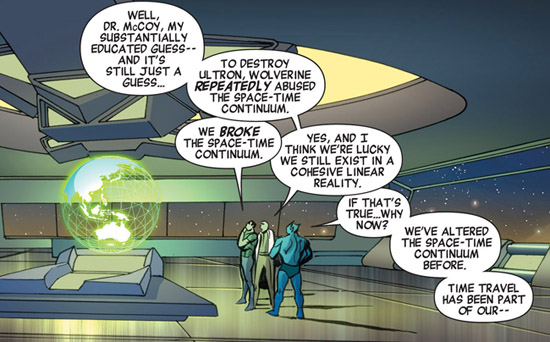
Because of all of the time travel, though, the timeline in which Ultron took over was completely erased… so all of the dropped threads that originated in that timeline are completely dead in the water. We find out in issue three that Vision has been taken over by Ultron, and is the one buying and killing superheroes – but we never find out how that happened, as Ultron is twenty-something years in the future, and should therefore not be able to control anything in the past. Later in the series, a group of several heroes goes into the future to try to fight against Ultron there, which happens while Sue and Logan travel back in time to try to prevent Ultron’s creation in the first place. Since we focus on Sue and Logan, we never find out what happened to that other team. Clearly we’re not meant to know; the outcome of the team that travelled into the future wouldn’t have any effect on the story even if we did happen to find out what went on. It circles back to the point of view switches that I talked about first, though – if you’ve led me to expect that I’m going to hear all different sides of the story, don’ be surprised when I can’t focus on the one plotline you’ve suddenly elevated above the others. The dropped plotlines might not be important in the end, but if we’re looking at it that way, then this could have been a two-issue arc in which Wolverine had to travel through time a lot, which would bring us to the end with the multiversal red alert without dragging us along for the ride.
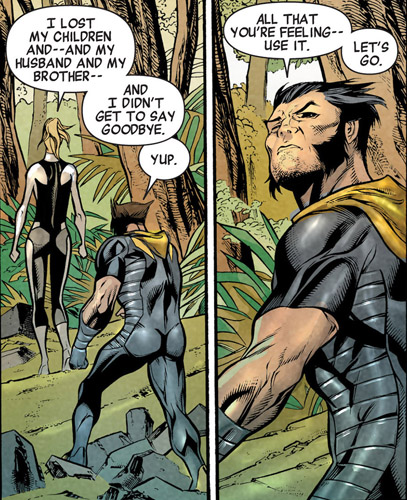
Another thing that bothered me was that the twists that we were promised at the start don’t mean anything to someone who doesn’t follow a large number of titles. We get glimpses of different characters at the end of the final issues, some of whom I was able to identify and some of whom I had to look up; while I’m certainly all for bringing lesser-known characters more into the limelight, it seemed like a cheap kind of cop-out for the big twist at the end of an event. I’m sure that fans of Angela, the huge character reveal on the final page, are thrilled to see that she’s being brought into the Marvel universe, but for people like myself who haven’t read many Image titles, it’s a big letdown of an ending. It felt more like the Easter egg at the end of The Avengers than it did an actual ending – it’s like we’re getting a glimpse of Thanos all over again, and people who have been fans of that title are excited, but if you’re not in that group then you’re left blinking in confusion at the person sitting next to you. Angela may turn out to be incredibly important in the future, and who knows, she might become a favorite for a whole bunch of new readers – but the fact remains that the reveal wasn’t a strong ending for the event, given that a lot of readers will have no idea what they’re supposed to take from Angela’s appearance.
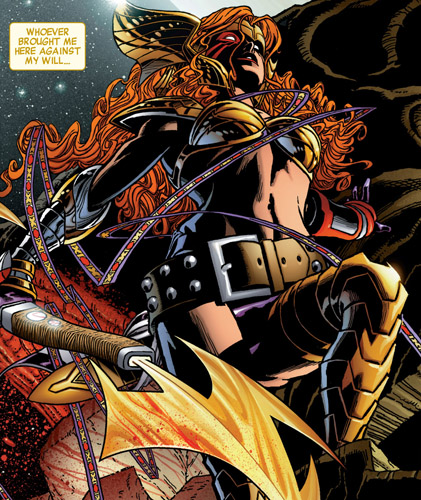
The last big problem with the event is one that I thought I’d never have. I read a good percentage of my comics digitally, which means that I don’t have the ads that the print version has… and without those ads, I wasn’t even aware until a chance visit to my local comic shop that there were tie-in issues available for the event. I’ve since read a few of them, and it seems from those that missing the tie-ins doesn’t detract from the main event, but knowing about them beforehand so I could have planned to pick up the ones that may have interested me would have been nice. Instead, I was left scrambling a little to find a few back-issues that I wanted to read. All of the ones that I read were relevant to the timeline that gets erased, and none of them add to the Time Travelling Adventures of Sue and Logan, but those tie-ins give us story that’s free of the point of view switches that distracted so much from the main event. I connected more with the story and characters in the Ultron #1 AU, a one-shot about Ultron’s son, than I did with the entire main story arc combined. Not knowing about those tie-ins detracted from the event.
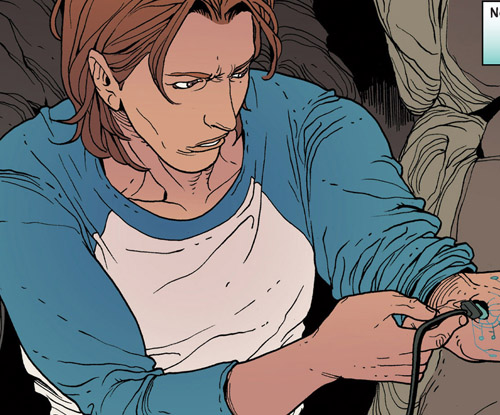
The story that happened is ultimately made irrelevant since the past is changed and nothing that we see in the first nine issues actually happens, so what was the point of the event in the first place? As with all events, it supposedly sets up a lot of things that are going to be coming down the pike at Marvel universe-wide in the near future, so the full impact of Logan breaking time and space still remains to be seen. That’s the most valid reason, and as time goes on we may see more and more repercussions spreading through Marvel titles, but by and large, it doesn’t feel like the main reason for Age of Ultron. It might be a way to redeem Hank Pym, who was the focus of the latter half of the story as well as the epilogue issue. For all we know, it could just have been a fun romp in the park for the creators, who got to completely annihilate the Marvel universe, destroying cities and killing heroes left and right in what was ultimately a game of no consequence.
In the end, though, Age of Ultron felt like a way to sell more comics. Of course, the bottom line is always going to be the focus of any business decision, but it felt more overt than ever during this event. Given how much the story meandered around before focusing in on Logan and Sue’s travels and the destruction of Ultron, it almost felt like a five-issue event was dragged out and doubled solely because Marvel knew that people would purchase all of the issues in the event. By back-loading the important parts of the story, they ensured that they’d keep you reading until the end, just so you were sure you didn’t miss any important parts. When I glanced through a physical copy of the final issue, I noticed that almost every individual character cameo was followed by an advertisement of an upcoming Age of Ultron follow-up story relating to that character. This might just be me being cynical, but Age of Ultron felt more like a publicity stunt – a way to get consumers to purchase more comics – than a relevant story.
Maybe I’m wrong. Maybe this will turn out to be the most important event of the decade. I suppose we’ll see in the months to come.
Age of Ultron. Written by Brian Michael Bendis; art by Bryan Hitch. To be published September 2013; collects Age of Ultron #1-10, Avengers Assemble #14AU-15AU, Fantastic Four #5AU, Fearless Defenders #4AU, Superior Spider-Man #6AU, Ultron #1AU, Uncanny Avengers #8AU, Wolverine & the X-Men #27AU, and Avengers #10AI. Find it on Amazon or buy it from comixology.
Infinite Crisis. Written by Geoff Johns; art by George Perez and Phil Jimenez. Published 2008; collects Infinite Crisis #1-7. Find it on Amazon or buy it from comixology.
Comments? Questions? Want to tell me how much you liked Age of Ultron? Leave a reply! I’ll be happy to talk comics with you.
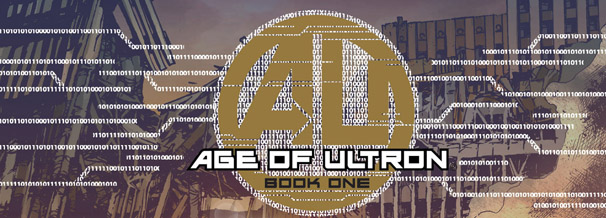
I have no idea what’s going on with the Age of Ultron. As a consequence of having to reduce my pull list and comics budget when the baby was born, I ended up giving up Marvel. I love what they’re doing – Hawkeye is awesome and I’m sure Bendis is doing great things with X-Men. But Marvel just requires you to buy too much in order to understand what’s going on. 5+ X-Men titles, 2+ Avengers, 2 Fantastic Four titles, etc
However, in the two years when I was spending around $100+ between DC and Marvel before the baby was born, I realized that Marvel has evolved their events so that they almost literally last forever. How? They have a summer event followed by Aftermath Event. So AvX was followed by AvX Consequences. Fear Itself was followed by Fear Itself Aftermath or something like that. It gets tiresome and it feels like they’re milking us for our money.
There’s another possibility here – we know that Age of Ultron was pushed out of the way by AvX. It was supposed to happen last summer. It was in Marvel Point One 2011. That’s why Spidey is Peter Parker. Perhaps because of the delay, the event had to be rewritten so that it doesn’t have any consequences since the comics had moved on? And maybe that’s why they’re pushing the aftermath thing – which probably ties in heavily with the X-Men from the Past storyline that Bendis is writing.
The whole setup of the event is that Ultron destroys the world in a pretty terrible way, and the remaining Avengers undo it by fracturing the timestream. I think it’s probably pretty close to what they were planning originally, but I can see how some things could have been changed.
I do agree that Marvel tends to wrap up each event in a follow-up event, and now I’m left wondering if the upcoming Infinity event will be the Age of Ultron follow-up. I suppose we’ll see.
[…] stories. There were a lot of other issues, but Kari has already covered most of them in her article Comic Events and Consumer Affairs: Age of Ultron, so I’ll move on to discuss Infinity, which I actually have high hopes […]